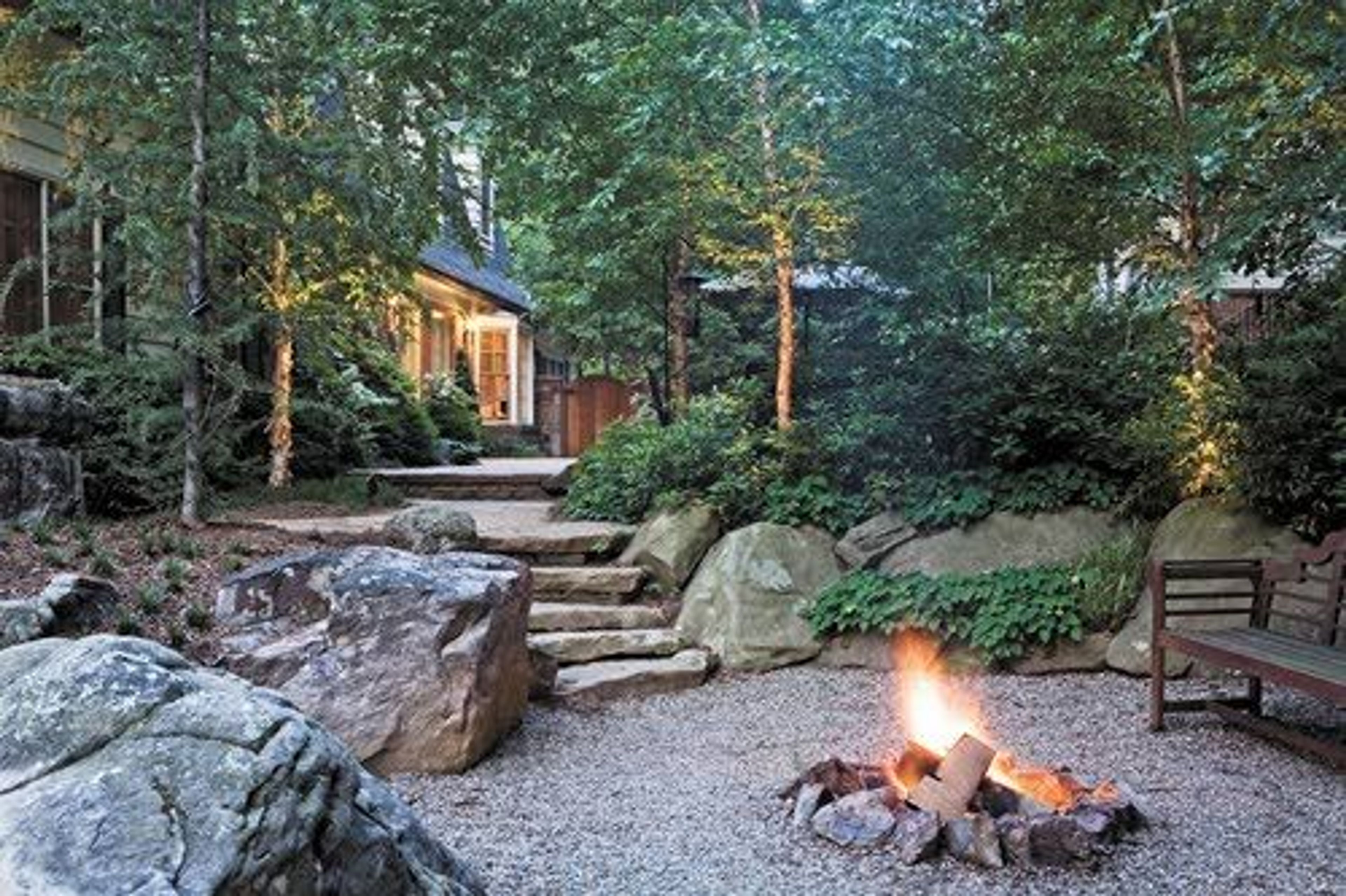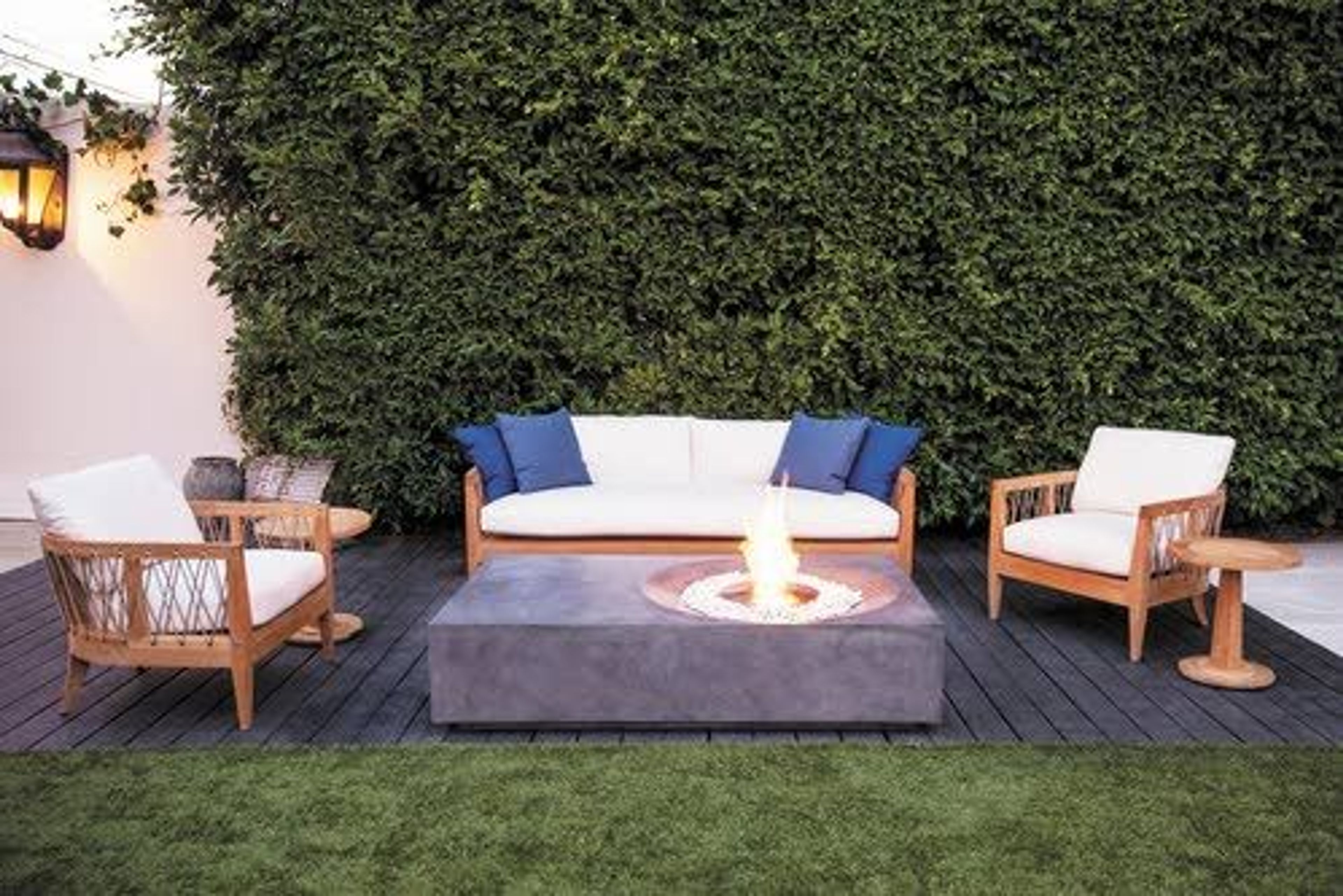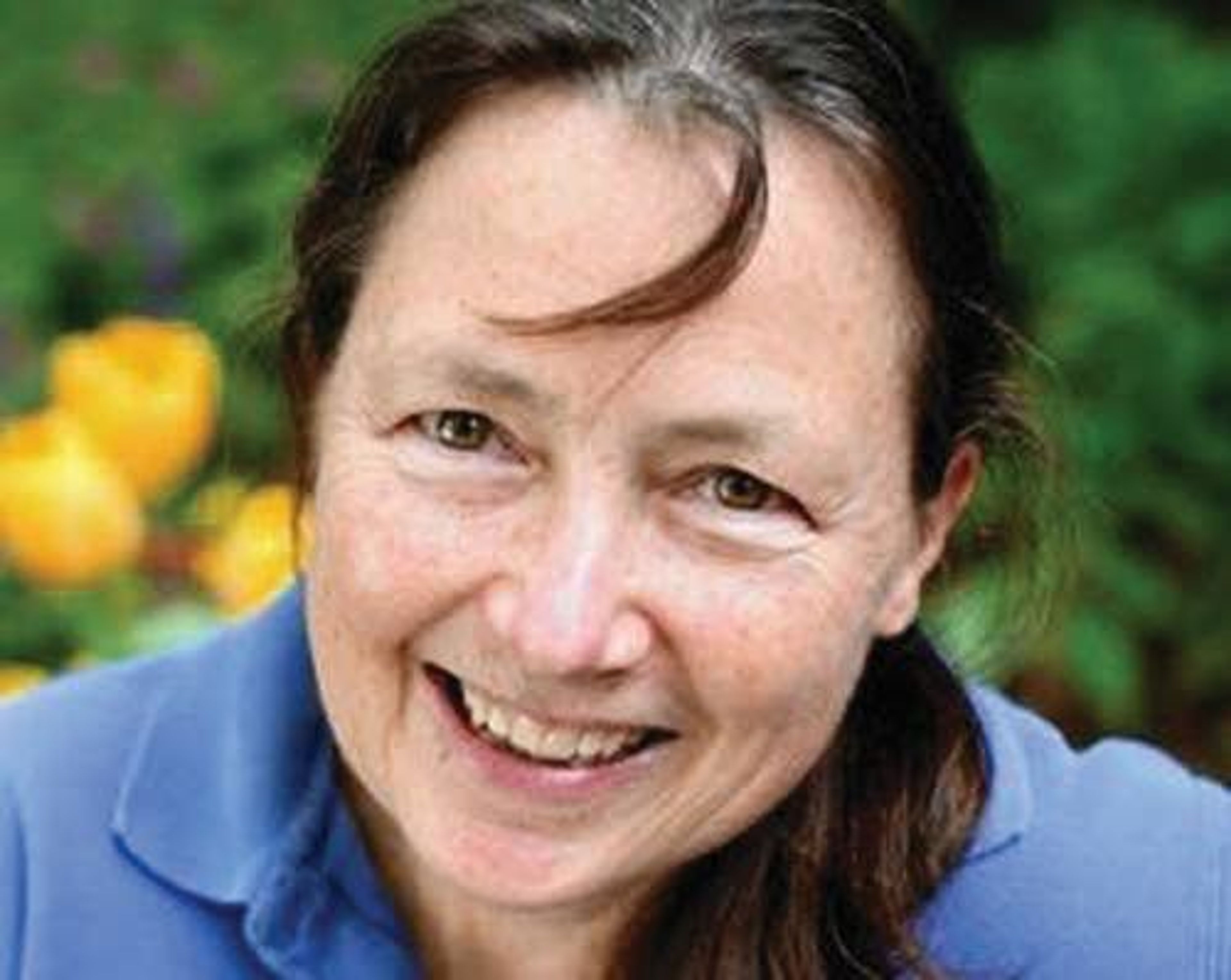There's nothing like flickering firelight in a garden, and modern fire features make it easier than ever to add a golden glow in your own backyard.
A warm fire invites you and your guests to linger in the garden when the weather is cool. Fancy fireplaces, which may stand 10 to 15 feet tall, are irresistible destinations in themselves: People naturally gather around a warm hearth.
A cozy fire pit is no less magnetic, but fire pits create the mood of a campfire. Modern fire elements - torches, flares, bowls, dishes and fire sculptures - are the cutting edge of a new tradition of decorative and cozy fire features, providing the light, atmosphere and warmth of fire.
"Fire is a purifying element, and it really does bring an essence to a garden," says Sabrena Schweyer, a garden designer in Akron, Ohio. Schweyer and her husband, Samuel Salsbury, work with clients to create gardens that are "a sanctuary and a sacred space," Schweyer says.
Fire elements, in particular, "can be very cleansing," she says. "If there is something you need to let go of, people take their intentions and put them in the fire. Meditating and fire are so powerful."
Easy, low-cost fire pits are among the most popular fire features with her clients,
Schweyer says. "People often do not want something elaborate and built in, and they like the versatility of something that is moveable," she says. In her own backyard, she and her husband have a two-foot wide copper fire bowl. When they have parties, "it becomes a focal point of our tiny little backyard," she says. When they're not entertaining, it is stored out of the way in the garage.
Clients often have strong opinions about the way they want to incorporate fire into their gardens, says Howard Cohen, a landscape architect at Surrounds, in Sterling, Va., near Washington, D.C.
"They might get it from when they were Boy Scouts," he says. The type of fire feature they choose "depends on the client and on their budget," he says, but clients who come to his firm tend to have a good idea of what they are looking for.
Fire pits have a low profile, so they don't interfere with views in the garden, Cohen says. He suggests a three-foot circle as a workable size for most gardens, with plenty of room around the sides for chairs or a garden bench, and for people to move around. If a fire pit is too big, "it's overwhelming, unless you want a bonfire," he says.
Well-placed fireplaces actually become an important part of the view, and designing a fireplace that fits gracefully into a garden is a bit of an art. "If they are too small, they look like a Munchkin fireplace," Cohen says. "It's cheaper, but it looks silly."
Larger fireplaces anchor a landscape and frame the views dramatically, he says. The smallest fireplaces his company designs have chimneys 10 to 11 feet tall; in a large garden, a big fireplace that suits the scale of the landscape might have a chimney up to 16 feet tall.
Modern fire features offer lots of possibilities: tables with fire pits built in as the centerpiece are among the most dramatic, but big fire bowls, architectural flares and kettles of fire are changing our garden landscapes. One of Cohen's designs, a modern fire lounge, involved a built-in couch and a marble coffee table with a flame source in the center.
Brown Jordan Fires (designed to complement the company's line of outdoor furniture) and Ecosmart Fire are two companies that have introduced energy-efficient modern fire elements. They burn an ethanol fuel called e-nrg, which is smokeless and odorless and does not spark, yet still provides enough heat to take the chill off a patio.
"These are my favorite new fire feature," says Sarah Conine, owner of Garden Cottage, a retail and mail-order specialty company with two shops in New Jersey. "Eco-burners are very user-friendly," she says. "They save homeowners money and hassle." They also do not normally require permits (as fireplaces usually do).
Conine has an ethanol-burning fire feature on her back porch. In the summertime, "it's just great for atmosphere, and it adds extra light," she says. "In the fall, it extends our use of our outdoor space."
Ethanol-burning features also do not require a vent, so they can be placed on a rooftop terrace or on an apartment balcony. These fire elements are technically classified as "decorative heating units," says Kim Rodgers, marketing coordinator for EcoSmart Fire and Brown Jordan Fires. "That can be helpful if you are having issues with installation."
When you light a fire outside, the technical details disappear. Having a fire in the backyard, whether it's in a fire pit, a fireplace or flickering warmly in the center of a patio table, "is like a mini vacation," Sabrena Schweyer says. "You're getting away from the everyday experience, to something more natural."
Design tips from the pros
- Before you start shopping, check local zoning regulations and building codes. If you are working with a landscape architect or garden designer, they should know the rules and the permitting procedure, if necessary.
- A fire feature should not be exposed to strong winds. There should be no tree branches or overhangs above the fire.
- Chairs are usually better than benches around fire pits. They're more versatile. "We like to keep things flexible," says Sabrena Schweyer, a garden designer in Akron, Ohio.
- The area around a fire pit "should be cozy and not too tight," Schweyer says. "You want to be able to walk around it.
- If you're having a fireplace built, you probably do not need a gas line, says Howard Cohen, a landscape architect at Surrounds, in Sterling, Va. "Just use starter logs," Cohen says. "You can buy a lifetime supply for what it would cost you to put in a gas line."
- A freestanding fireplace may cost $20,000 or more, Cohen says. Fire pits are much less expensive, "maybe just a few hundred dollars if you have rocks around a pit in a pea-gravel area."
- If you don't want to have to lay fires or clean up ashes, flickering-flame fire elements are the solution. "You can have the look of a wood fire without the smoke," says Sarah Conine, owner of Garden Cottage, a retail and mail-order garden specialty company.
Sources
- Salsbury- Schweyer, www.salsbury-schweyer.com
- Surrounds, landscape architecture and construction, www.surroundslandscaping.com
- Garden Cottage, www.gardencottage.com
- Brown Jordan Fires, www.brownjordanfires.com
- EcoSmart Fire, www.ecosmartfire.com
---
Ross is a garden writer in Kansas City, Mo.











